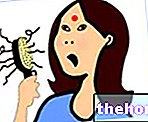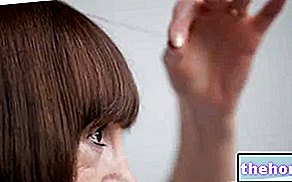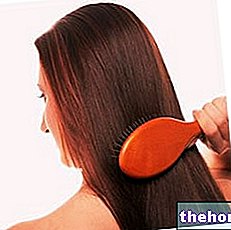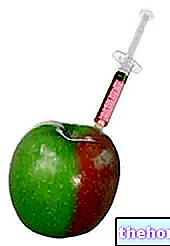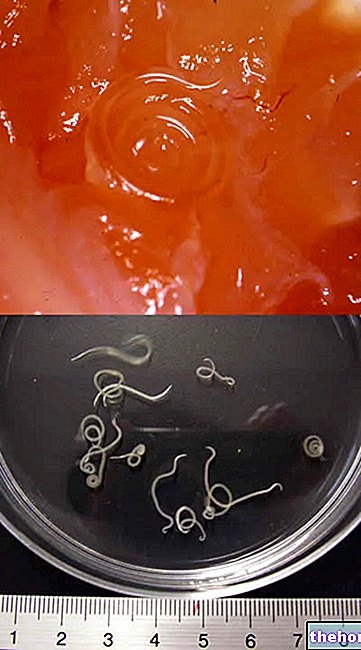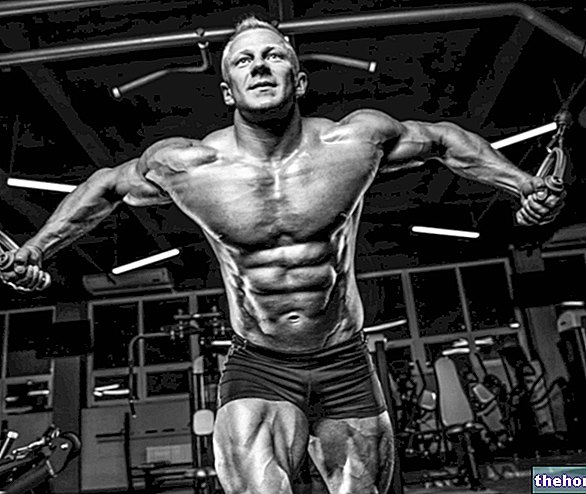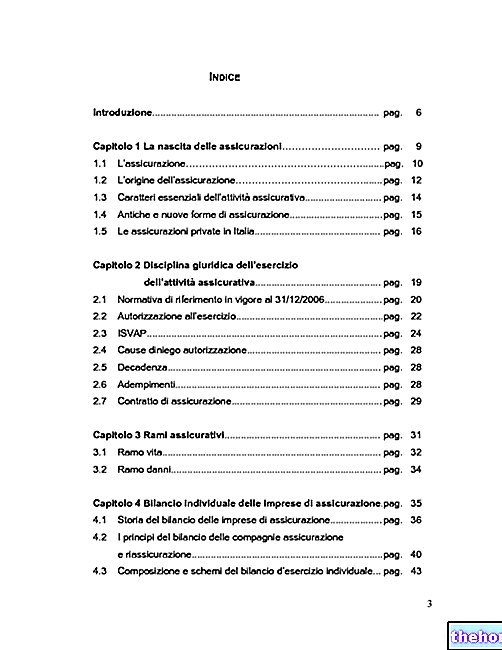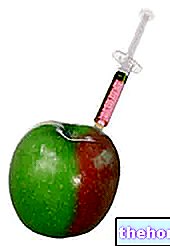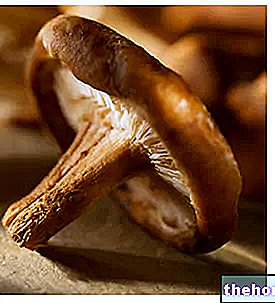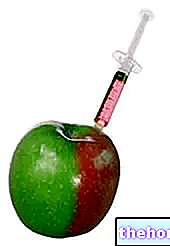Dandruff is a discomfort that affects the scalp, manifesting itself with a whitish flaking that covers the head.

In addition to being responsible for mild or intense itching, dandruff is an extremely widespread imperfection. In fact, detaching itself during the brushing of the hair, it is deposited on the clothes becoming very visible; for many, dandruff conveys a feeling of "poor hygiene".
It mainly affects males up to early adulthood; it rarely affects people over the age of 35-40.
The material published is intended to allow quick access to advice, suggestions and general remedies that doctors and textbooks usually dispense for the treatment of Dandruff; such indications must in no way substitute the opinion of the attending physician or other health specialists in the sector who are treating the patient.
What to do
Dandruff can be treated or controlled quite effectively.
- The first step is to understand what the trigger is. Usually, dandruff is caused by:
- Overgrowth of a fungus called Malassezia furfur (Pityrospum); in most subjects this infection is totally asymptomatic, but sometimes it can worsen and generate dandruff.
The microorganism feeds on sebum and hydrolyzes it, producing irritating fatty acids, responsible for accelerated cell turnover. The most suitable solution is to use specific antifungal shampoos (see Pharmacological Cures). - Excess sebum is a very important predisposing factor. It can be caused by:
- A consistent androgenic hormonal flow: when it comes to an adolescent condition it can resolve spontaneously, but sometimes it depends on primary hormonal disorders.
- An "excessive local sensitivity to androgens: there are specific pharmacological treatments to reduce sensitivity to androgens, but they mainly concern the hair follicle. These are solutions used exclusively as a remedy for baldness and paradoxically, instead of reducing it, sometimes they seem to increase dandruff afterwards. the application.
- There are conditions statistically related to the onset of dandruff. These are:
- Dry skin: responsible for dry and itchy dandruff. It is necessary to use a suitable shampoo.
- Oily skin: responsible for oily dandruff; it is caused by seborrheic dermatitis (it can also affect the eyebrows, sides of the nose, etc.). It is necessary to use a suitable shampoo.
- Psoriasis: inflammatory skin disease that causes the production of large, itchy scales, including on the scalp. There are no definitive solutions, but it is advisable to contact a dermatologist to try to reduce the acute manifestations.
- Contact dermatitis: sensitization towards some substances contained in hair products. The solution is to identify the responsible molecule and choose products that do not contain it.
- Cradle cap or neonatal seborrheic dermatitis: a disorder that occurs in the first months of life in the baby. It usually resolves spontaneously and it is sufficient to prefer specific hygiene products. In other cases, symptoms have been improved by eliminating from the diet the foods responsible for adverse intestinal reactions (see What to Eat).
- Other predisposing factors are:
- Weakness of the immune system: it is evident when there are several infections in close proximity (for example acute cold sores). If the immune system is compromised due to serious illness (for example HIV virus or EBV) or intense therapy (for example chemotherapy ), dandruff is certainly a problem of marginal importance. On the contrary, if the immune system is damaged by: stress, environmental factors, diet, etc., intervening on the diet can bring significant benefits (see What to eat).
- Inadequate nutrition: Many complain of excess dandruff during periods of poor nutrition. However, it is only a "hypothesis and does not appear to be supported by any concrete scientific evidence. Some foods may have a protective function, but others are more likely to have a negative effect (see What to Eat and What NOT to Eat).
- Nervous stress: if dandruff appears in very stressful periods, it is obvious that the cure consists of psycho-physical rest.
- Too frequent washing and / or too aggressive shampoos: dry and irritate the scalp. There are three solutions:
- Reduce the frequency of washing.
- Reduce the amount of shampoo.
- Choose a type of shampoo that is not very aggressive and / or suitable for frequent washing.
- Too little washing: they cause the accumulation of sebum and the proliferation of the fungus Malassezia furfur. Furthermore, they do not allow you to effectively remove the skin flakes that tend to accumulate.
- Use of irritating or greasy cosmetics for the hair: low-quality gels, hairspray and mousse are often involved in irritation or in the increase of sebum. It is enough to suspend them or replace them with better products.
What NOT to do
- Use a shampoo that is unsuitable for the predisposition of your scalp (oily or dry skin).
- Wash your hair badly, too often or too infrequently.
- Neglecting a "possible excessive proliferation of Malassezia furfur.
- Don't cure seborrheic dermatitis.
- Neglecting psoriasis.
- Ignore any forms of contact dermatitis.
- Underestimate any impairments of the immune system.
- Feeding inadequately.
- Give in to nervous stress and don't try to reduce it.
- Use irritating or greasy cosmetics for your hair.
What to eat
Before listing which foods might be recommended to combat dandruff, let's briefly describe the composition of human sebum: glycerides (57%), waxy esters (25%), squalene (15%), cholesterol esters (2%) and cholesterol. (1%). Relevant concentrations of antioxidants are also observed such as: vitamin E and coenzyme Q10.
As can be seen, fatty acids (contained in glycerides, especially sapienic acid) play a fundamental role. These show different ramifications from individual to individual, as well as the relationship between them.
It is not clear how much nutrition can affect the composition of the sebum, even if the lack of essential fatty acids and antioxidants could have a significant impact. Certainly, at least in part, the predisposition to dandruff has a genetic-hereditary basis.
The general dietary recommendations are:
- Foods rich in essential polyunsaturated omega 3 and omega 6 fatty acids:
- Eicosapentaenoic and docosahexaenoic acid (EPA and DHA): very active from a biological point of view, they are mainly contained in fishery products and algae. The foods that contain the most are: sardines, mackerel, bonito, sardinia, herring, alletterato, tuna belly, garfish, seaweed, krill etc.
- Alpha linolenic acid (ALA): compared to the previous ones it is biologically less active. It has the same function as EPA and DHA. It is mainly contained in the fat fraction of certain foods of vegetable origin or in the oils of: soy, linseed, kiwi seed, grape seed, etc.
- Linoleic acid (LA): sunflower seeds, wheat germ, sesame, almost all dried fruit, corn germ and related oils are rich in them. The derivatives are:
- Gamma linoleic acid (GLA) and linolenic dihomogamma (DGLA): borage oil is rich in them.
- Arachidonic acid (AA): peanuts and other nuts are rich in it.
- Foods rich in antioxidants:
- Vitamins: the antioxidant vitamins are carotenoids (provitamin A), vitamin C and vitamin E.
Carotenoids are contained in vegetables and red or orange fruits (apricots, peppers, melons, peaches, carrots, squash, tomatoes, etc.); they are also present in crustaceans and milk. Vitamin C is typical of sour fruit and some vegetables (lemons, oranges, mandarins, grapefruits, kiwis, peppers, parsley, chicory, lettuce, tomatoes, cabbage, etc.). Vitamin E can be found in the lipid portion of many seeds and related oils (wheat germ, corn germ, sesame, kiwi, grape seeds, etc.). - Minerals: zinc and selenium. The first is mainly contained in: liver, meat, milk and derivatives, some bivalve molluscs (especially oysters). The second is mainly contained in: meat, fish products, egg yolk, milk and derivatives, enriched foods (potatoes, etc.).
- Polyphenols: simple phenols, flavonoids, tannins. They are very rich: vegetables (onion, garlic, citrus fruits, cherries, etc.), fruit and relative seeds (pomegranate, grapes, berries, etc.), wine, oil seeds, coffee, tea, cocoa, legumes and whole grains, etc.
- In case of cradle cap associated with diarrhea and gaseous colic: eliminate the foods potentially responsible for food intolerances or allergies; some are lactose and milk proteins.
- In case of a compromised immune system (in addition to antioxidants), it is advisable to emphasize the contribution of:
- Vitamin C or ascorbic acid: it is mainly contained in fresh vegetables and fruits, preferably acidic: peppers, citrus fruits, parsley, kiwi, lettuce, apple, chicory, etc.
- Vitamin D or calciferol: it is mainly contained in: fish, fish oil and egg yolk.
- Probiotics: are physiological bacteria of the intestine, also contained in fermented foods such as yogurt, tofu, tempeh, buttermilk, etc.
What NOT to Eat
- Foods rich in "bad fats": found mostly in fast food and other junk foods. As anticipated, many people report that they notice an increase in dandruff during periods of disordered and unhealthy eating.
They could be directly involved: - Hydro-forming fats (especially rich in trans-conformation chains): hydrogenated oils, margarines, sweet snacks, salty snacks, packaged baked goods, etc.
- Saturated and bifractionated fats: fatty cheeses, cream, fatty cuts of fresh meat, sausages and cured meats, hamburgers, frankfurters, palm kernel and palm oil, etc.
- Alcoholic.
- Foods potentially responsible for food intolerances or allergies; some are lactose and milk proteins (especially in the case of cradle cap associated with diarrhea and gas colic).
Natural Cures and Remedies
Herbal and herbal products. They are mainly plant extracts for topical use:
- Chilli extract.
- Apple cider vinegar.
- Eucalyptus essential oil.
- Rosemary essential oil.
- Lemon essential oil.
- Nettle essential oil.
- Sage essential oil.
- Essential oil of Melaleuca alternifolia (Tea tree): it is antiseptic and antifungal.
Pharmacological treatment
Those used against dandruff are not real drugs, but specific products (shampoos and lotions) that contain therapeutic molecules. They differ according to the active ingredient:
- Zinc pyrithione: reduces the population of Malassezia furfur.
- Tar: slows down the cell turnover rate and is useful against seborrheic dermatitis. It can be irritating.
- Selenium sulfate: slows down the cell turnover rate and is also effective against Malassezia furfur. NB. It is advisable to read the label and rinse thoroughly after use. In addition, some products can bleach dyed hair.
- Ketoconazole: It is a broad spectrum antifungal and can be effective where others fail.
If shampoos and lotions prove ineffective, dandruff could be the clinical sign of more significant discomfort. At that point, under prescription, some dermatologists also administer corticosteroids.
Prevention
In addition to what is mentioned in the "What To Do" chapter for dandruff, we list some factors that can help prevent it:
- Reduce psycho-physical stress
- Wash your hair frequently, but with a shampoo that does not irritate the scalp: it favors the removal of excess sebum and prevents the appearance of dandruff.
- Follow a diet rich in antioxidants (including minerals, especially zinc) and essential fatty acids. Some also support the role of sulfur amino acids and B vitamins but these are molecules more useful for hair health.
- Reduce the consumption of alcohol and foods rich in "bad fats".
- Reduce the use of irritating or greasy cosmetics such as: gels, lacquers or mousses.
Medical Treatments
There are no specific medical treatments for dandruff.


